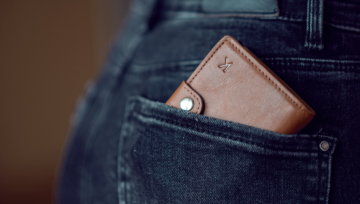Virginia Postrel at Quillette:
 Like printed books, perspective drawing, and double-entry bookkeeping, pockets were heralds of the modern era. In most times and places, people have either carried their money, combs, papers, and other small items in bags separate from their garments or tucked them into belts or sleeves. Integrated pockets are a product of European tailoring, which dates back only to the 14th century. They emerged when men’s breeches ballooned in the mid-1500s.
Like printed books, perspective drawing, and double-entry bookkeeping, pockets were heralds of the modern era. In most times and places, people have either carried their money, combs, papers, and other small items in bags separate from their garments or tucked them into belts or sleeves. Integrated pockets are a product of European tailoring, which dates back only to the 14th century. They emerged when men’s breeches ballooned in the mid-1500s.
Early pockets were bags sewn to the inside of the waistband and otherwise hanging loose. They were significantly larger than modern pockets—a rare surviving example from 1567 is a foot deep—and sometimes included drawstrings. Regardless of size, the critical change was that the pocket became part of the clothing and thus a more secure and intimate extension of the wearer.
More here.
